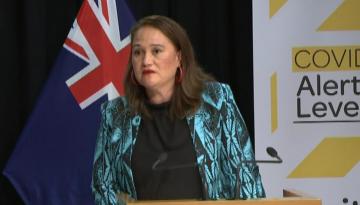
Job numbers plummet by 37,500 in April as COVID-19 economic impact cripples businesses
New figures show job numbers plummeted by 37,500 in April as the economic impact of COVID-19 cripples businesses in New Zealand.
Stats NZ's data shows total filled jobs fell 1.7 percent in April 2020 compared with March 2020, when it was flat - and that April's fall is the largest drop since the filled jobs series began more than 20 years ago, in 1999.
Economic statistics manager Sue Chapman said with the country going into lockdown throughout most of April, the impact of COVID-19 is now being seen in falling job numbers.
Related News

Labour voters want Govt to support beneficiaries more - Newshub-Reid Research poll

Tax-free weekly payments announced for workers laid off due to COVID-19
Air New Zealand has announced plans to cut 4000 jobs, while Fletcher Building said it would lay off 1000 staff, while it's predicted up to 100,000 workers in tourism could be made redundant - all becuase of COVID-19.
Stats NZ included workers paid by employers who are being subsidised by the COVID-19 wage subsidy scheme as filled jobs - but the scheme will soon expire, except for businesses that can prove 50 percent income loss.
Chapman said while a fall in filled jobs in New Zealand does not necessarily mean employment has ceased in all cases, Stats NZ did see a rise of more than 30,000 people claiming the Jobseeker benefit.
Treasury is forecasting unemployment to increase significantly in New Zealand, rising to 8.3 percent by the end of June, before peaking at 9.8 percent in September and then recovering thereafter.
The Government unveiled a $50 billion fund in Budget 2020 to respond to the economic impact of COVID-19, and Treasury estimates to public debt to grow from 19 percent of GDP last year to 54 percent by 2022.
Some of the $50 billion fund has been spent, but $20 billion was left for the Government to respond to the crisis in the coming months.
Earlier this week, the Government announced that full-time workers who lost their job because of the economic impact of COVID-19 will now be eligible for tax-free weekly payments of almost $500 a week for a period of 12 weeks.
It sparked backlash from anti-poverty advocates who said it created "two-tiers of unemployed" because the Income Relief Payment is nearly double the after-tax base Jobseeker benefit, which is $250.74.
ACT leader David Seymour said New Zealand is in "desperate need" of economic policies that will give businesses the confidence to hire again.
"Aside from throwing money at every perceived problem, there's just no indication that Labour has a clear economic plan."
Finance Minister Grant Robertson said in his Budget 2020 speech that the Government "faced a choice between a public health catastrophe as has been seen in other countries or unprecedented and difficult measures".
Newshub's latest poll showed nine-in-ten New Zealanders backed the Government's call to put the country into lockdown, while Prime Minister Jacinda Ardern's personal popularity as leader skyrocketed up 14 points to 56.5 percent.
But Stats NZ's new data shows how the alert level rules have affected businesses.
Filled jobs in the primary industries fell 4.3 percent, while jobs in the goods-producing industries fell 1.0 percent, and in the service industries they fell 1.7 percent.